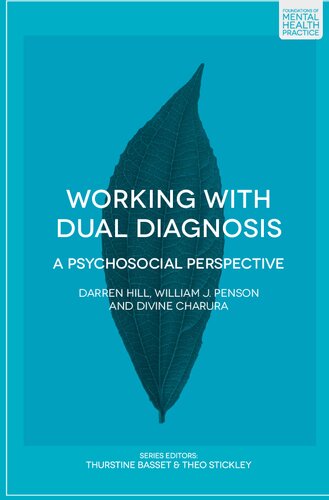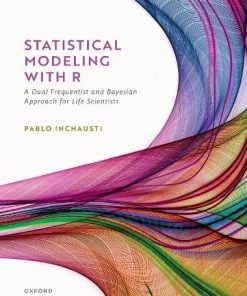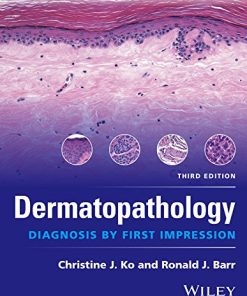Working with Dual Diagnosis A Psychosocial Perspective 1st Edition by Darren Hill, William Penson, Divine Charura 1137337672 9781137337672
$50.00 Original price was: $50.00.$25.00Current price is: $25.00.
Working with Dual Diagnosis: A Psychosocial Perspective 1st Edition by Darren Hill, William J. Penson, Divine Charura – Ebook PDF Instant Download/DeliveryISBN: 1137337672, 9781137337672
Full download Working with Dual Diagnosis: A Psychosocial Perspective 1st Edition after payment.

Product details:
ISBN-10 : 1137337672
ISBN-13 : 9781137337672
Author: Darren Hill, William J. Penson, Divine Charura
In the UK it is estimated that a third of patients in mental health services have a substance abuse problem, and that half of patients in drug and alcohol services have a mental health problem. Part of Palgrave’s Foundations of Mental Health series, this book explores the intertwined issues of substance use and mental health as a social phenomenon and offers a critical, informative guide to understanding dual diagnosis. Written by authors with extensive experience within mental health and drug treatment services, Working with Dual Diagnosis explores areas that are key to understanding the relationship between the two, including: – Models for understanding substance use, mental health and the correlation of complex social and psychological factors – Treatment processes for working with individuals, groups and families and within a community setting – The historical social, political, economic and legislative context of mental health and substance use – Practice implications for dual diagnosis, including how practitioners can work with and promote better treatment, after care and support for those experiencing dual diagnosis issues. Enriched with reflective exercises, case studies and key points, this book will inform all work related to dual diagnosis populations within health, social and criminal justice service, and is an essential text for social work, nursing, occupational therapy and probation students.
Working with Dual Diagnosis: A Psychosocial Perspective 1st Table of contents:
PART I History, Politics and Concepts
1 The Historical Context of Substance Use, Mental Health and Dual Diagnosis
Dual diagnosis: a ‘contested’ term and a ‘real’ issue
Why do substances and mental health go together?
What comes fi rst, mental health symptom or substance use effect?
Stimulants
Depressants
Hallucinogens
The global is the local: economic liberalization and the normalizationof substance consumption
REfERENcES
2 The Socio-Politics of Dual Diagnosis: Psychiatry, Law and Economics
The social and political construction of dual diagnosis: understanding the context of mental health
Moral–medical
Medical–criminal justice
Psychiatric–criminal justice
Economic–criminal justice
REFERENCES
3 Key Models for Understanding Dual Diagnosis
Introduction
Critical accounts
The main models
Psychosocial perspectives
The social model of disability in dual diagnosis
REFERENCES
PART II Working in Practice
4 Working with Individuals: The Broader Picture and Getting Started
Introduction
The varied and complex nature of the relationship between substance misuse and mental health problem
Values-based practice
Importance of acknowledging issues of difference and diversity and their impact on treatment
The Care Programme Approach – case management
Strengths-based models in mental health
Strengths-based models for substance use
Risk
Physical and mental health factors affecting motivation to change
Key factors in assessment when working with dual diagnosis
Assessing clients and formulation
The problem list – a tool for getting started
Problem formulation and conceptualization in dual diagnosis
Relapse prevention
Homework in relapse prevention
Relapse prevention in mental health
Harm reduction
REFERENCES
5 Psychosocial Interventions
Motivational interventions (MI)
Importance of facilitative conditions
What is motivational interviewing?
Stages in motivational interviewing
Brief interventions and self-help
Guided self-help
Contingency management
Cognitive behavioural therapy (CBT) and formulation
Structure in CBT
Psychodynamic therapy
Psychodynamic understanding of addiction
Addiction as transitional phase fixation
Medication as transitional objects
Self-regulation difficulties
Substance use as self-medication
Understanding substance use from an attachment theory perspective
Repetition compulsion
Psychodynamic therapy and what it says about the practitioner in the therapeutic relationship
Inpatient, residential settings and the criminal justice system
Mindfulness and technology-based interventions
Technology-based interventions
REFERENCES
6 Working with Groups and Families
Introduction
Group work modes
What is the 12-step programme?
Dual diagnosis and 12-step programmes
Group interventions and psychotherapy
Resistance and challenges to the curative process in group interventions
Group ending, separation and focus on relapse prevention
Key protocols informing family work perspectives
Involving families and carers
A five-step approach
Behavioural family therapy (BFT) and cognitive behavioural (CB) interventions
Behavioural couples therapy
Basic family and systemic therapy concepts
NICE guidelines (2007) – supporting families and carers
Social behaviour and network therapy (SBNT)
SBNT stages
REFERENCES
7 Working in Community Settings: Dual Diagnosis and the Recovery Movement in a Community Context
The lived experience of challenges faced by professionals working in the community
Recovery movement within the community
Therapeutic communities
Integration of harm reduction and recovery-oriented practices
The social model of disability: rights of access
People also search for Working with Dual Diagnosis: A Psychosocial Perspective 1st:
challenges in working with patients with dual diagnosis
dual diagnosis jobs
what is dual diagnosis
dual-diagnosis treatment
working with did patients
Tags: Dual Diagnosis, Working, Psychosocial Perspective, Darren Hill, William Penson, Divine Charura
You may also like…
Religion & Spirituality - Spirituality
Engineering
Business & Economics - Logistics
Mathematics - Probability
Engineering - Industrial Engineering & Materials Science
Sustainable Manufacturing Systems: An Energy Perspective 1st Edition Lin Li
Psychology - Psychotherapy
Politics & Philosophy - General & Miscellaneous Philosophy












